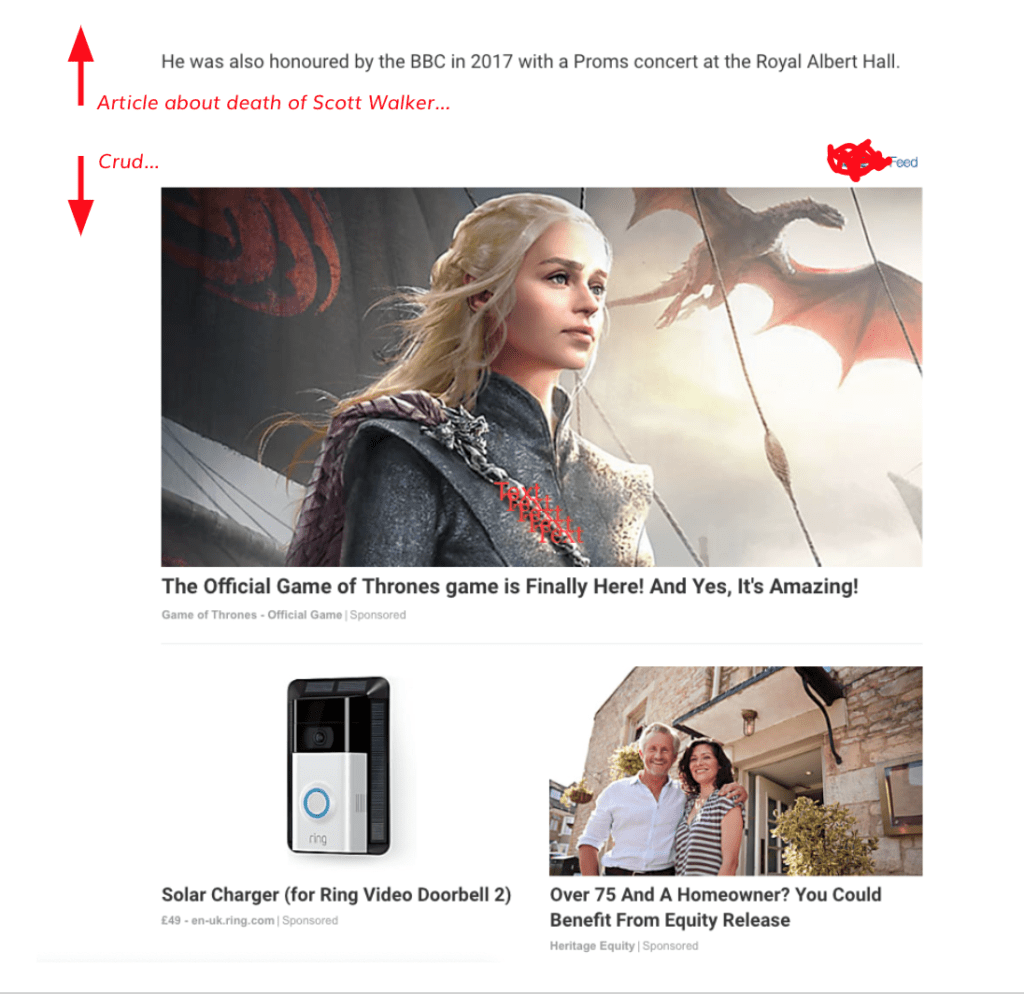|
Getting your Trinity Audio player ready...
|
I read this recent post about the future of native advertising with interest. Mainly because it seemed to willfully ignore what publishers and their audiences really want. It says: “Native advertising’s ability to blend in with an end user’s content experience has made it extremely popular with brands. In fact, it’s so popular that native made up almost 60% of all digital display spending last year, according to eMarketer.”
That’s an awesome number, and it’s great to hear that brands like the format so much. The piece goes on to say: “Good native advertising doesn’t mimic; rather, it matches the form and function of the site where it appears. To do business with a generation [that’s] sceptical of traditional display [advertising], native is the antidote.”
To which I’d say ‘err,’ and ‘maybe’, and then ‘are you freaking kidding?’
Here’s the thing. Native advertising isn’t an antidote, it’s a virus. It’s capable of destroying two of the most important things that brands need to get their messages to the world: i) a publisher’s product experience and ii) a publisher’s audience.
Here’s the scene… it’s got a lot to do with how things ‘look.’
Display ads look like ads – but they’re kind of broken. There are so many of them, and most of them are so badly executed that they’re a turn off for audiences. In their current state, especially when programmatic runs amok, they are anti-engagement, and they ruin the product experience.
Enter native advertising…
Things that look like content, look like content: headlines, images, category tags, etc. This kind of stuff is easy on the eye and very clickable. Of course, it could be engaging – and so to a certain extent native advertising makes a lot of sense (and some of it even gets clicks).
But here’s the rub. Native ads look like a publisher’s product. They actually compete with it. Worse, they smuggle audiences away to different parts of the internet. Hence, they’re a virus.
A bad programmatic implementation of native advertising is a bit like a zombie. It almost looks like the product (nice images, similar fonts, etc), but when you look at it closely, it’s a mess (what the hell is that headline all about!?). In fact, it behaves like a plague of zombies, because it’s designed to take over the host system and make it look and behave like total crap.
For example, here’s the base of an article about the death of Scott Walker. (Disclaimer, I’m a Scott Walker fan. I’m not a Game of Thrones fan and I’m not a pensioner, yet.)

What does the above content have to do with Scott Walker? Or me?
(Incidentally, I tried hard to find a really good example of native advertising to include as a screen grab – something helpful and contextual, but I gave up. At the foot of an article about Brexit, The Guardian gave me native ad articles about amazing new Gantt chart software, plus x5 investment strategies for retirement. (What is it with retirement, I’m really not that old!?).
So, where’s the win?
Oh yeah, of course! Native advertising writes a cheque for publishers every month. Publishers are being paid to play host to an army of zombie and vampire ads.
There has to be a smarter way for publishers to monetise their pages and audiences.
That’s what we’re working on with Felix. We’re helping publishers like Ti Media and Euronews to turn a concept that’s similar to native advertising (content widgets) into something that stimulates traffic retention (ie, owning the audience, not giving it away); plus other things like publisher-owned content recirculation and ad inventory recirculation (ie, further monetisation). A bit like ‘In-brain,’ as opposed to ‘Outbrain’… so that publishers get paid more advertising revenue by delivering a new ad unit (Felix) that helps the user experience rather than harms it, and makes the ads that they already have work harder by showing them to more people, more of the time.
Check out how we’re getting along here (case study spoiler alert: we’re doubling audience engagement). And how and why we’re building it all here (spoiler alert: we’re looking to disrupt the user experience for publishers – because display and native advertising is a little bit broken, and content ‘discovery’ is where it’s at).
And you can also have a play with it here, on this very page, via the ‘discovery’ sidebar and footer content widgets to the right and below this article. Go on, have a click and give them a go. They’ll take you into a rabbit hole of great new content from WNIP – a place of discovery where we hope you won’t be overrun by
Roger Warner, CEO, Felix
About Felix
Felix is an AI-driven content engagement solution that helps brands and publishers retain their hard-earned traffic. Its AI-powered engine gives audiences compelling opportunities to discover more amazing content; and uses this as a means of serving better advertising and better pathways into revenue-generating outcomes such as subscriptions, sponsorship, sign-ups anddonations.
Photo by Daniel Jensen on Unsplash


